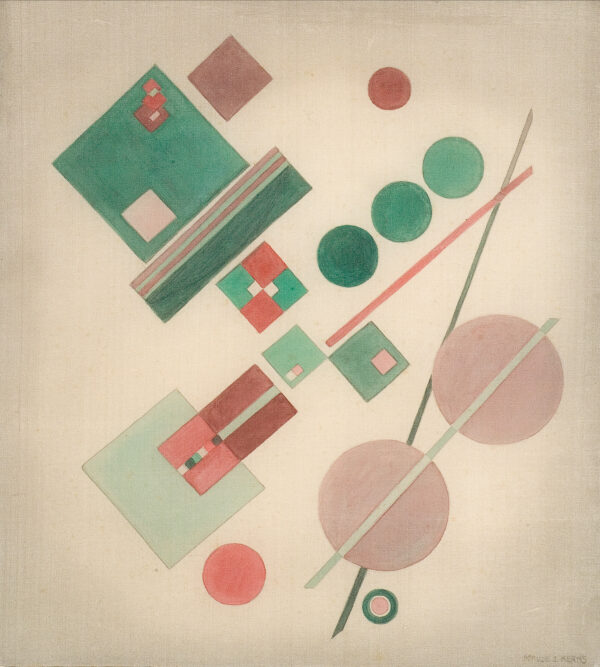
Floatation
Kerns, Maude Irvine
about 1935–40
Artwork Information
-
Title:
Floatation
-
Artist:
Kerns, Maude Irvine
-
Artist Bio:
American, 1876–1965
-
Date:
about 1935–40
-
Medium:
Gouache on silk
-
Dimensions:
11 x 10 inches
-
Credit Line:
Wichita Art Museum, Museum purchase, Murdock Society, Burneta Adair Endowment Fund and funds donated in memory of Virginia Malone
-
Object Number:
2006.6
-
Display:
Not Currently on Display
About the Artwork
The painting’s beauty is due in part to its delicacy, which the artist achieved through the subtle gradation of two colors—pink and green—on a silk support. The painting’s aesthetic interest derives from the contrast between that delicacy and the boldness of the arrangement of purely geometric forms. The confidence and dynamism of the formal placement challenge the quieting forces of soft color and texture.
There are various terms to describe Kerns’ style during the 1930s and ‘40s. The most generic would be “abstract.” To her New York friends in the Guggenheim Museum circle, her work would have been called “Non-Objective,” a term used to define the work of abstract artists who made absolutely no concession to nature or representational notation. Indeed, Kerns’ paintings were included in exhibitions at the Museum of Non-Objective Painting (the original name of the Guggenheim Museum in New York) from 1941 until 1952. European artists and collectors could have labeled her a “synthetic cubist,” a practitioner of the second phase of cubism, in which forms were combined, or “synthesized,” as if they were collage. Non-Objective abstract art constitutes a period in American art that follows early Modernism and precedes Abstract Expressionism.
The pivotal influences on the development of Kerns’ mature style, which she reached in her sixties, were her studies with Arthur Wesley Dow; her trip to Europe in 1913, when she studied various artists including Picasso and Kandinsky; and a visit to Japan in 1928, which confirmed her belief in the spiritual in art. The artist she most admired and followed was Kandinsky because of his belief that abstract shapes convey timeless, universal, spiritual truths.
The visual effect Kerns was probably trying to achieve was a compromise between the “loud” abstraction of Kandinsky and the more tranquil and balanced work of Dow. Her fear was that the compromise would be read as “feminine” by her more radically abstract colleagues.